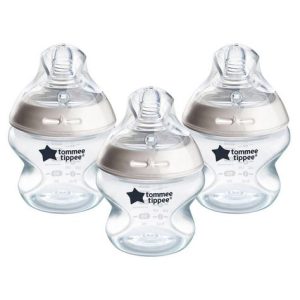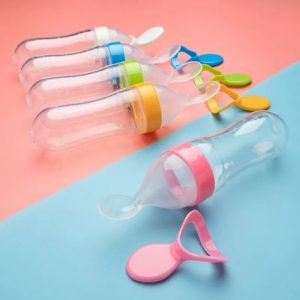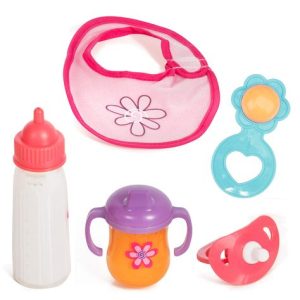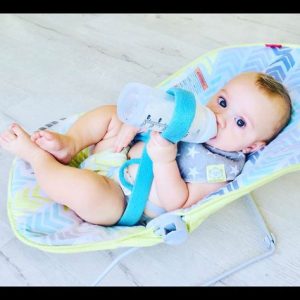Bottle feeding is a safe and healthy way to nourish your baby. Whether you choose to exclusively bottle feed, breastfeed, or use a combination of both, bottle feeding can provide your infant with the essential nutrients they need to thrive. This guide will equip you with the knowledge and confidence to bottle feed your baby like a pro!
Gathering the Essentials: Bottle Feeding Supplies
Before you begin bottle feeding journeys, there are a few essential supplies you’ll need:
Bottles:
Choose bottles that are BPA-free and age-appropriate for your baby. Consider trying different nipple shapes to see which one your baby prefers.
Bottle nipples:
Nipples come in different flow rates. Start with a slow-flow nipple to prevent your baby from choking.
Formula:
If you are not breastfeeding, you will need to choose an infant formula. Talk to your doctor for advice on selecting the right formula for your baby.
Bottle brush:
A bottle brush is essential for cleaning bottles thoroughly.
Bottle sterilizer:
While not essential, a sterilizer can help ensure your baby’s bottles are germ-free.
Bibs:
Bibs will help catch spills and drips during feeding time.
Burp cloths:
Burp cloths are handy for wiping up spit-up and burps.
Preparing for Bottle Feeding: Setting the Stage
Once you have your supplies gathered, here are some steps to prepare for a successful bottle feeding session:
- Wash your hands: Thoroughly wash your hands with soap and warm water before preparing a bottle and feeding your baby.
- Clean and sterilize bottles and nipples: If you are using a sterilizer, follow the manufacturer’s instructions. If not, wash bottles and nipples in hot, soapy water and rinse them thoroughly.
- Prepare the formula: Follow the instructions on the formula container carefully to measure and mix the formula. The water temperature will vary depending on the formula you are using.
- Warm the bottle (optional): Some babies prefer their bottle lukewarm. You can warm the bottle by placing it in a warm bath of water for a few minutes. Never microwave the bottle!
- Test the bottle temperature: Before feeding your baby, always test the temperature of the formula by placing a few drops on your wrist. It should feel lukewarm, not hot.

Positioning Your Baby for Comfort
- Cradle your baby comfortably in your arms in a semi-upright position.
- Support your baby’s head and neck with your arm.
Offering the Bottle and Pacing the Feed
- Hold the bottle at an angle so that the nipple is filled with formula, not air.
- Gently touch the nipple to your baby’s lips to trigger their rooting reflex.
- Let your baby take the nipple in their mouth at their own pace.
- Never force the bottle into your baby’s mouth.
- Pace the feeding by taking breaks for burping every ounce or two.
- Look for cues that your baby is full, such as turning away from the bottle, fussiness, or closing their fists.
After the Feeding: Burping and Cleaning Up
- After feeding, burp your baby by holding them upright against your shoulder and patting their back gently.
- Burp your baby several times throughout the feeding and again at the end.
- Once your baby has finished feeding, discard any leftover formula.
- Wash the bottle, nipple, and bottle parts thoroughly with hot, soapy water.
Troubleshooting Common Bottle Feeding Challenges
Bottle feeding doesn’t always go perfectly smoothly. Here are some solutions to common challenges:
- Baby won’t latch: Try a different nipple shape or temperature.
- Baby is gassy: Burp your baby more frequently during feeding.
- Baby spits up: This is common and usually not a cause for concern. Keep your baby upright after feeding to minimize spit-up.
- Baby is fussy: Make sure your baby is not too hot or cold. Check for diaper changes.
The Benefits of Bottle Feeding
Bottle feeding offers several benefits for both babies and caregivers:
Provides essential nutrients:
Formula is fortified with all the nutrients your baby needs to grow and thrive.
Shared feeding responsibilities:
Bottle feeding allows caregivers to share feeding responsibilities and bond with the baby.
Dietary freedom:
If you have dietary restrictions or are unable to breastfeed, bottle feeding ensures your baby receives proper nutrition.
Monitoring intake:
Bottle feeding allows you to accurately measure how much formula your baby is consuming at each feeding.
Flexibility and convenience:
Bottle feeding offers flexibility for scheduling and allows parents to take breaks when needed.

Combining Bottle Feeding with Breastfeeding
Many parents choose to combine bottle feeding with breastfeeding. This is called combination feeding. Here are some tips for success:
- Establish breastfeeding first: If you plan to combine feeding methods, it’s recommended to establish breastfeeding first. This can help ensure your baby learns a proper sucking technique.
- Talk to your lactation consultant: A lactation consultant can offer guidance and support for combining breastfeeding and bottle feeding.
Bottle feeding, like breastfeeding, is a time to bond with your baby. Make eye contact, talk to your baby in a soothing voice, and sing songs. The most important ingredient in any feeding is love and attention.
If you have any concerns about your baby’s feeding habits or weight gain, consult your pediatrician.
Building a Bottle Feeding Routine
Here are some tips for establishing a bottle feeding routine that works for you and your baby:
- Pick a feeding schedule: Newborns typically eat every 2-3 hours, but follow your baby’s cues for hunger. As they grow, feedings will space out more.
- Create a calming environment: Find a quiet, comfortable place to feed your baby.
- Respond to your baby’s cues: Look for hunger cues like rooting, sucking on hands, or fussiness. Don’t wait until your baby is crying to feed them.
- Pace the feeding: Let your baby take the lead and pause for burping breaks throughout the feeding.
Safe Bottle Feeding Practices
- Always follow formula preparation instructions carefully. Incorrect dilution can lead to health problems for your baby.
- Never heat a bottle of formula in the microwave. Microwaving can create hot spots that can burn your baby’s mouth.
- Throw away any leftover formula after a feeding. Do not reuse leftover formula.
- Replace bottle nipples regularly. As nipples wear out, the flow rate can change, which can cause choking.
Storing Breast Milk for Feeding
If you are expressing breast milk for bottle feeding, here are some tips for safe storage:
- Store breast milk in the refrigerator for up to 4 days.
- Store breast milk in the freezer for up to 6 months.
- Label containers with the date the milk was expressed.
- Thaw frozen breast milk in the refrigerator or under running lukewarm water. Never thaw breast milk in the microwave.
Remember, the most important thing is to feed your baby in a way that is safe and comfortable for both of you. If you have any questions or concerns, consult your pediatrician or a lactation consultant.



